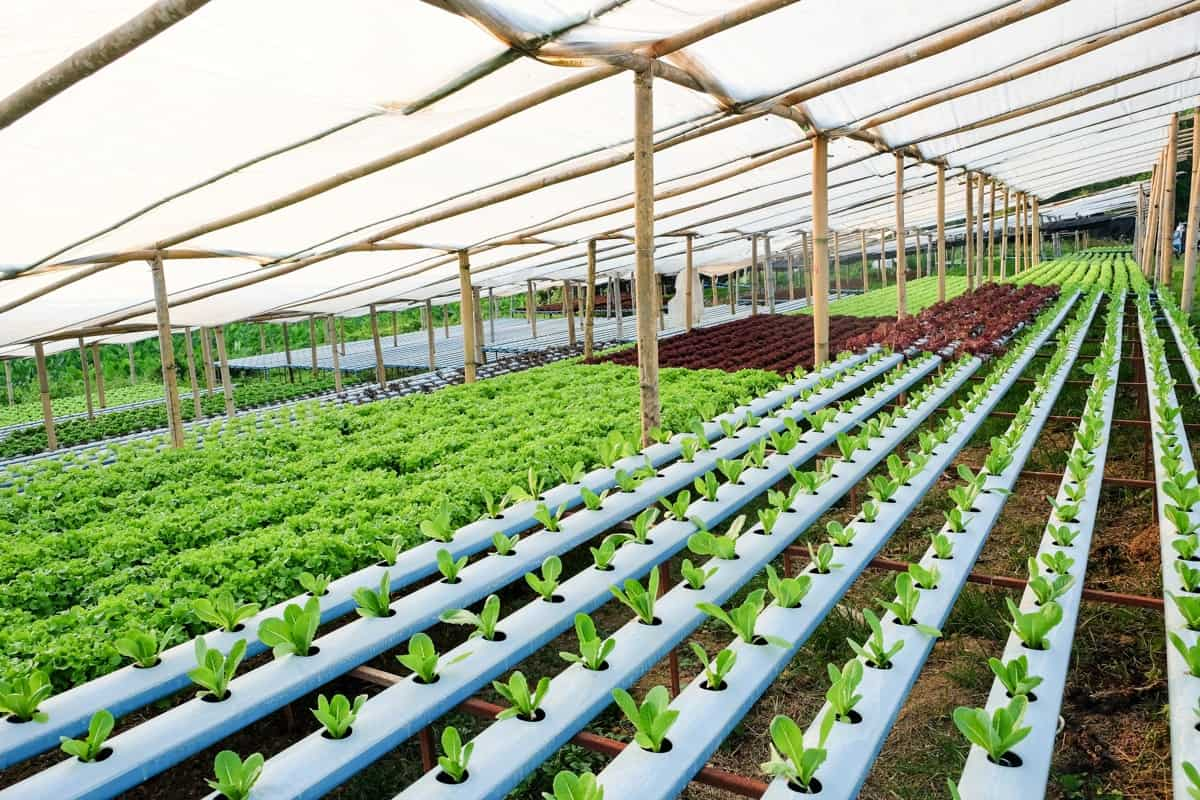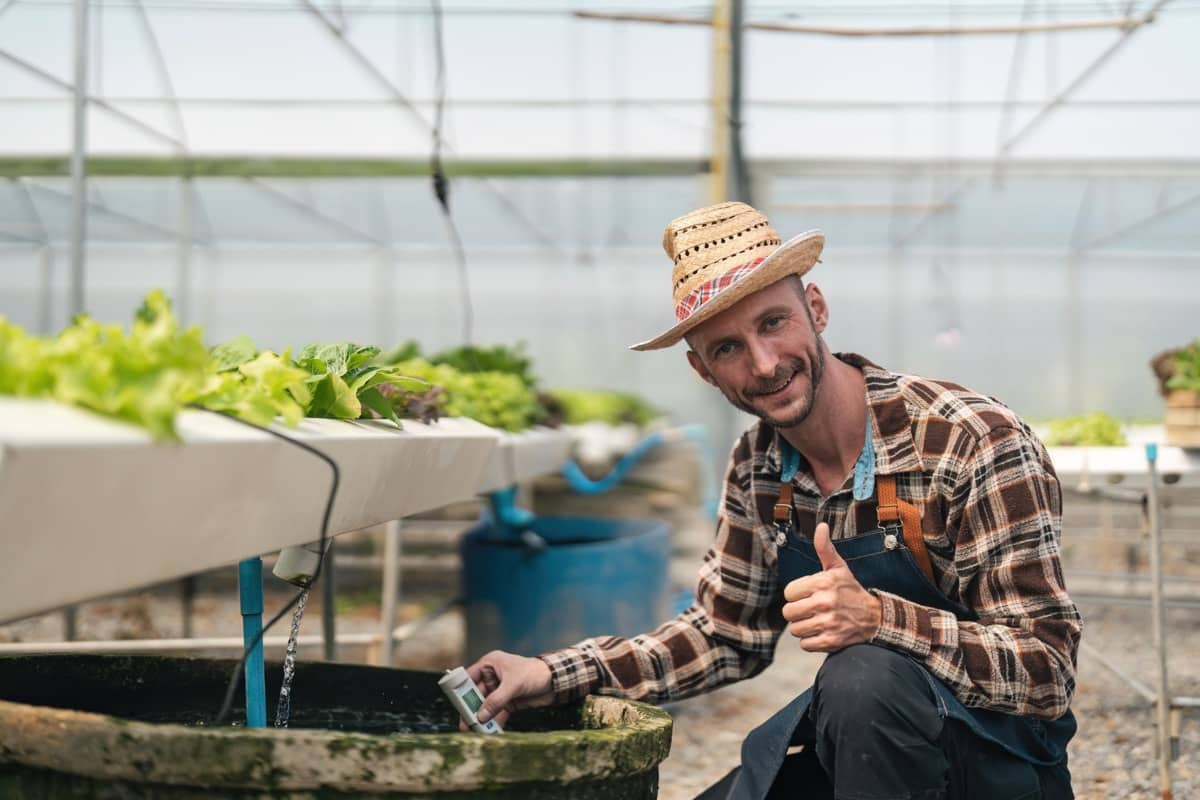Hydroponic farming has revolutionized the way we grow food, making it possible to produce crops in locations where soil-based agriculture might not be possible. It’s an innovative method that allows plants to be grown using nutrient-rich water solutions instead of soil, optimizing their growth and productivity.

The problems solved by hydroponics include space and water constraints, soil degradation, and the adverse effects of climate change on traditional agriculture. However, like all farming methods, hydroponic systems also face challenges. This article will explore ten common problems in hydroponic farming, offering solutions, treatments, and methods to keep your hydroponic plants alive and thriving.
10 Common Problems With Hydroponic Farming
Ph Imbalance in Hydroponic Systems and Its Effects
One common issue in hydroponic farming is the pH imbalance. This is crucial as the pH level determines the availability of nutrients to the plants. Plants may struggle to absorb the necessary nutrients if the pH is too high or too low, leading to stunted growth, nutrient deficiencies, or other hydroponic leaf problems.
For example, hydroponic lettuce problems can stem from a pH that is too low, leading to nutrient lockout. To fix this, monitor the pH level in your hydroponic system regularly, ideally daily. Plants like slightly acidic conditions, pH 5.5-6.5. If the pH is out of this range, it can be adjusted using pH up or down solutions available at any gardening store.
Nutrient Deficiencies in Hydroponic Plants and Solutions
Nutrient deficiencies can cause various issues in hydroponic plants, from yellowing leaves to stunted growth. Diagnosing this problem can be complicated since different deficiencies often present similar symptoms. The solution lies in regularly monitoring nutrient levels and adjusting them as needed.
If nutrient deficiencies persist, you might need to flush your system and start anew with a fresh nutrient solution. It’s crucial to use a balanced nutrient solution designed for hydroponic systems, as these are formulated to contain all the necessary macro and micronutrients your plants need.
Algae Growth and Control in Hydroponic Farming
Algae growth is a common problem in hydroponics. Algae thrive in the same conditions as your plants – a rich nutrient solution, water, and light. While not directly harmful to plants, algae can become problematic when they proliferate, competing with your plants for nutrients and potentially clogging system components.
Algae control involves a few key steps. First, prevent light from reaching your nutrient solution, as this is what algae need to photosynthesize and grow. You can use opaque or solid-colored materials for your system’s reservoirs and channels. Second, maintain a clean environment, removing visible algae and regularly cleaning your system. Finally, consider adding beneficial microbes to your system. These compete with algae for nutrients, preventing them from taking over.
Root Rot in Hydroponic Systems and Prevention Methods
Root rot is a common problem in hydroponics, usually caused by waterborne pathogens and poor oxygenation. The condition can make hydroponic plants fall over, making the roots slimy and discolored. Preventing root rot involves optimizing the oxygen levels in your nutrient solution. This is often achieved with air stones or diffusers that create bubbles in the nutrient solution, increasing the oxygen concentration. Regularly changing your nutrient solution and maintaining a clean system can also prevent the pathogens that cause root rot.
Managing Pests in Hydroponic Setups
Pests can be a serious issue in hydroponic farming, as they can easily spread from one plant to the entire system. Common pests include aphids, spider mites, and whiteflies. The best way to deal with pests is prevention.
Check your plants often for pests and take quick action if you find any. Introducing beneficial insects can be a great organic pest control method. For example, ladybugs can help control aphid populations. Additionally, maintaining a clean environment can prevent pests from becoming a problem in the first place.
Waterborne Diseases in Hydroponic Farming and Prevention
Just as with pests, diseases can easily spread in a hydroponic system. Pathogens in the water can quickly infect multiple plants, leading to widespread issues. Prevention methods include regularly sanitizing your system and isolating plants that show disease signs.
In case you missed it: How to Grow Orchids Hydroponically: Can Orchids Grow in Water?

Monitoring water quality is crucial. Pathogens often thrive in nutrient-rich, warm water, so maintaining the optimal temperature and changing your nutrient solution regularly can help prevent diseases. Adding beneficial bacteria can also be useful, as these can outcompete harmful pathogens.
Temperature Fluctuations and Their Impact on Hydroponic Crops
Temperature fluctuations can be a common problem in hydroponics. Plants typically thrive in relatively stable temperatures, and sudden changes can cause stress, leading to slower growth and lower yields. To combat this issue, monitor the temperature in your growing area and nutrient solution. Keep your growing area in the optimal range for your particular plants, and avoid sudden changes as much as possible. Using a temperature controller can help maintain stable conditions.
Clogged or Malfunctioning Hydroponic System Components
Just as with any system, components of a hydroponic setup can malfunction or become clogged. This can lead to inadequate nutrient distribution, affecting plant growth. Regular system maintenance is crucial. Check your pumps, pipes, and other components regularly, and clean them as necessary to prevent clogs. If a part is not functioning correctly, it’s best to replace it immediately to prevent further problems.
Inadequate Oxygen Levels in Hydroponic Reservoirs and Solutions
Plants need oxygen at their roots to thrive; hydroponics usually provides this oxygen in the nutrient solution. However, if the oxygen levels are too low, it can lead to root diseases and poor plant growth. An air pump and stones can increase oxygen levels in your nutrient solution. Additionally, the water level in your system should not be so high that it submerges the entire root system, as this can limit access to oxygen.
Problems With Nutrient Uptake in Hydroponic Plants
Even if your nutrient solution is perfectly balanced, your plants might still have problems absorbing nutrients. This can be due to various factors, including pH imbalances, temperature fluctuations, or other stress factors. Keeping all conditions in your hydroponic system optimal can help prevent nutrient uptake issues. Regularly check pH and temperature, maintain a clean system, and monitor your plants closely for any signs of stress.
Conclusion
While addressing the common problems and their solutions in hydroponic farming, it’s equally vital to remember the significance of regular system monitoring. This should include daily checks of pH levels, temperature, and nutrient concentration in the system. These checks will detect irregularities early, allowing immediate intervention to restore optimal growing conditions.
In case you missed it: Unveiling the Downsides: 11 Disadvantages of Hydroponics You Must Know

Similarly, physical inspection of plants for signs of diseases or pests is crucial. This proactive approach to maintenance and observation often makes the difference between success and failure in hydroponic farming, turning potential problems into learning and system improvement opportunities.
In conclusion, while hydroponic farming has unique challenges, they are not insurmountable. You can manage a thriving hydroponic farm by understanding these common issues and their solutions. Despite these challenges, the benefits of hydroponics – such as efficient water use, space optimization, and potential for high yields – make it a highly attractive agricultural method for the future.
- Feed Your Flock for Less: Top 10 Tips to Save on Chicken Feed
- Ultimate Guide to Ossabaw Island Hog: Breeding, Raising, Diet, and Care
- Hatching Answers: The Top 10 Reasons Your Chickens Aren’t Laying Eggs
- Eggs and Economics: Breaking Down the Cost of Raising Backyard Chickens
- Defend Your Greens: Proven Methods to Keep Iguanas Out of Your Garden
- Ultimate Guide to Cinnamon Queen Chicken: A Comprehensive Guide for Beginners
- Ultimate Guide to California Tan Chicken: Breeding, Raising, Diet, Egg-Production and Care
- Ultimate Guide to Marsh Daisy Chicken: Breeding, Raising, Diet, and Care
- 10 Types of Chicken Farming Businesses You Can Start for Profits